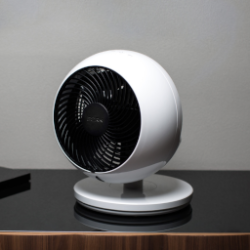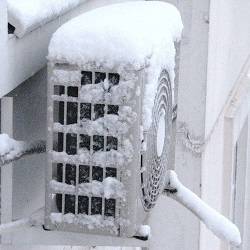Installation of roof fans
One of the stages of creating a modern ventilation system is the installation of a roof fan on the surface of the roof. With its help, the atmosphere in the room is constantly updated, air pollutants are removed, which ultimately has a positive effect on the health of the residents of the house. The urgency of creating high-quality artificial ventilation is caused by the widespread work on the insulation of buildings, which significantly lowered the level of natural air circulation in them. Also important was the introduction of European quality standards for distribution.
Content
Scope and purpose of roof fans
Roofing fan is a mechanism designed to create active air circulation in the house, shop.Produced models differ in size, performance (power), the level of noise generated. The device is the main element of any ventilation system, the main force in creating forced air movement.. This is the best option for rooms with poor circulation.
Electric fans are installed on:
- furnace tubes, extracts;
- roofs of houses, industrial enterprises, public buildings, shopping and sports centers.
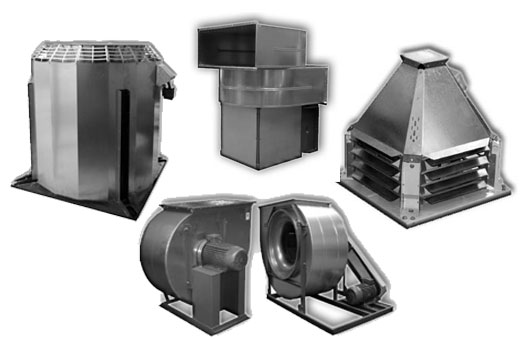
For industrial buildings and objects with a massive gathering of people, structures with a high probability of fires, we are talking about installing roof-mounted smoke exhaust fans.
The main functions performed by ventilation are as follows:
- ensuring a constant flow of fresh air;
- creating and maintaining optimal humidity levelthat will provide disposal of dampness in bathrooms and utility rooms, will prevent the appearance of mold;
- in the event of fire, smoke-removing systems are designed to quickly remove combustion products from buildings: soot, smoke, fumes;
- removal of sewage fumes;
- elimination of stagnant air masses;
- exemption from odors of different origin: kitchen, from the work of household appliances.
Modern roof fans differ in a number of advantages:
- ease of maintenance;
- low working noise;
- they do not need special power lines - they operate from the internal power grid of the building;
- the presence of several operating modes (this makes it possible to adjust their performance);
- protected from precipitation inside the installation;
- for small mechanisms it is not required to use special equipment during installation.
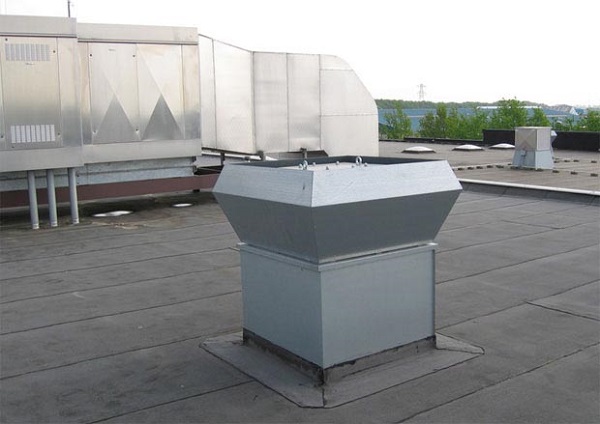
Thanks to the use of ventilating installations inside buildings, the flow of cleaner air is constantly provided outside, unpleasant odors are removed.
Used tools for mounting
The installation of the roof fan is performed using a specific set of tools, materials, tools. To work you need to stock up:
- a glass;
- pallet;
- cable (preferably heat resistant);
- vibration supports;
- wooden bars;
- sealant;
- bolts with washers and nuts;
- metal channel;
- tape measure, construction level;
- jack, cart, crowbar;
- perforator (or drill), screwdriver;
- screwdrivers, wrenches, pliers.
The list of required materials may be supplemented with other items. It depends on the characteristics of the roof (the level of its inclination, the material of the ceiling) and the weight of the equipment fixed on it.
With the growth of plant productivity, their size increases. For the installation of powerful fans will need to use lifting gear: winches, cranes.
Installation procedure and recommendations for work
For proper installation of roof fans, protective measures must be observed, depending on the roofing material. Mounting Patterns different models or on different types of surfaces differ in some details. But we can distinguish the general procedure for manipulation, which boils down to a number of the following actions:
- study the installed unit: check the integrity of the design, the operability of the electric motor, the smoothness of the rotation of the fan and the adjustment of technological gaps;
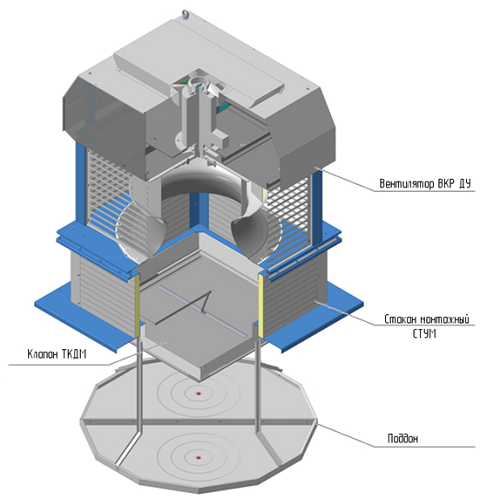
- get acquainted with the features of the roof;
- create the necessary holes in it under the duct;
- mounted reinforced concrete glass;
- settling on it a noise-insulating rubber gasket (you can also use a wooden frame for this purpose);
- connect the ventilation unit with the air ducts of the building, and additionally attach them to the roof supporting structures;
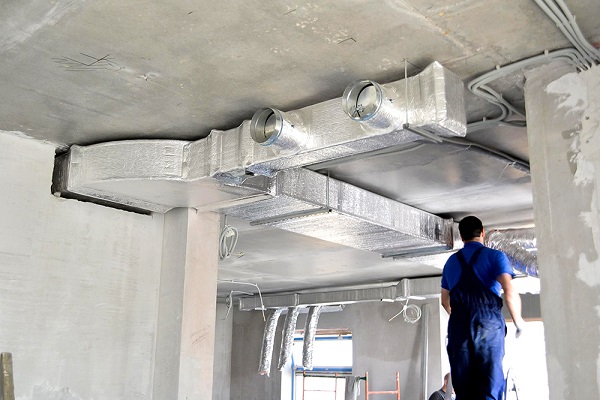
- close up joints and gaps with sealant;
- connect the electric motor, ground (according to the rules) metal parts of the equipment;
- check the correctness of the direction of rotation of the blades of the unit, if necessary, change it - change the phase on the engine.
Installation work is performed from the roof.
The required direction of rotation of the impeller depends on the design type of ventilation: supply, exhaust. Often on large objects set combined (forced-air and exhaust) systems.
The following are additional installation guidelines.
- Work is desirable to carry out on a hard top.
- Motor control is required to bring inside the room, and if there are several points (for convenience) - all are reduced to one place.
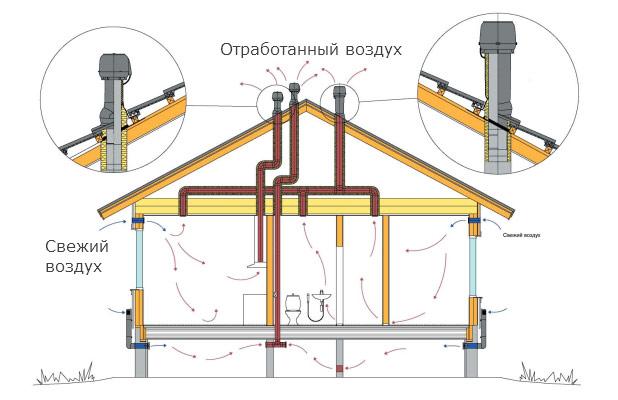
- Directly near the fans, it is necessary to fasten the switches so that you can safely maintain the mechanism.
- For soft roofs individual wiring diagrams are required, depending on the situation.
- It is better to prepare the supporting structure for the unit installed on the duct (exit mine) in advance.
- The fan should be mounted taking into account the average thickness of the snow falling annually: the distance between the outlet and the roof level should be at a minimum of 60 cm.
- When the fixed equipment is adjacent to brick or concrete walls, then they need to be waterproofed, and attached to the ventilation unit heat deflector.
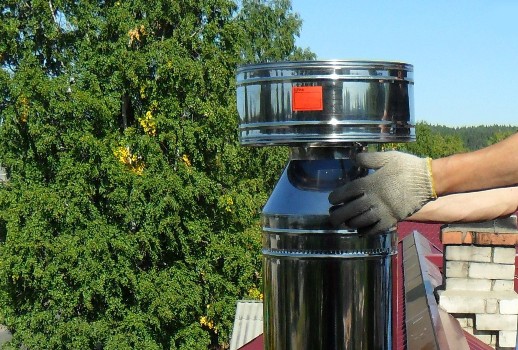
- If there is no ventilation system in the building, then you will need to pre-assemble air ducts, and only then place a fan on the roof.
All installation work should be carried out with strict observance of the rules of safe work at height (especially on sloped roofs) and electrical equipment.
Installation of roof fans begin with a study of equipment and roof, the choice of installation location. Having prepared the tools, proceed to fixing the fan on the roof. High-quality installation and commissioning work allows you to create an effective system of air ventilation, which will work for a long time, while the level of vibration and noise from it will be normal.The house will create a favorable microclimate with clean air, and in case of ignition, the installation of fire ventilation will automatically turn on.

/rating_off.png)







